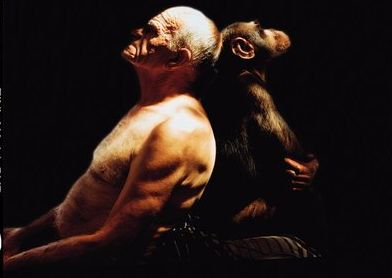
A monkey in the zoo was heard asking the question, “Am I my keeper’s brother?” The theory of evolution answers the question with an unambiguous “YES!”Apes and humans share a common descent.
Given below are several evolutionary interpretations of the relationship between humans (hominin) and apes (hominid) based on an unproven assumption – that any similarities found between them is due to a common ancestor.
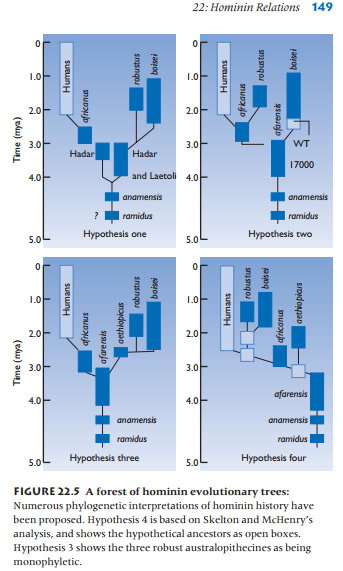 From Roger Lewin. Human Evolution: An Illustrated Guide 5e (Blackwell, 2005), p. 149.
From Roger Lewin. Human Evolution: An Illustrated Guide 5e (Blackwell, 2005), p. 149.
The different phylogenetic interpretations of hominin evolutionary trees show that there is no consensus among paleoanthropologists about the relationship between hominin and hominid despite all the sensational reports of new discoveries of human fossils in the media.
Note: Definition of terms:
Hominid – the group consisting of all modern and extinct Great Apes (that is, modern humans, chimpanzees, gorillas and orang-utans plus all their immediate ancestors).
Hominin – the group consisting of modern humans, extinct human species and all our immediate ancestors (including members of the genera Homo, Australopithecus, Paranthropus and Ardipithecus) [Source: Australian Museum, Sydney, Australia]
These terms can be confusing as they are often used interchangeably in informal discussions. See footnote for more clarification.*
One popular phylogenetic interpretation is that suggested by Ian Tattersall, a renowned paleoanthropologist who is curator emeritus of the American Museum of Natural History.

From Ian Tattersall, Masters of the Planet (Palgrave McMillan, 2012), p. 12.
The fossil record provides evidence of apes-like australopithecines and humans-like various Homo species, but there is no record of transitional fossils between them. The dotted lines refer to inferred relationships without clear fossil evidence, but they serve as convenient extrapolations to link what otherwise would be disjointed groups of hominid.
Caution is in order when evaluating the claims of theories of human evolution. One should be aware when some phylogenies simply pretend that there are no uncertainties (hence the absence of dotted lines), like the suggested time-line of the phylogeny of the branch of the hominin tree given below:

Some evolutionists claim that humans could be descended from hominid (e.g. homo afarensis) 4 million year ago, although this claim is hotly contested among the evolutionists themselves. A more accepted suggestion is that modern human sapiens could be descended from homo erectus (1.9 mya -150 kya). The current research based on genome analysis of female inheritance of mitochondria DNA and male inheritance of Y chromosome DNA suggests a possible bottleneck of a small human population (or perhaps a human pair?) between 100-150 kya.
Regardless of the tentativeness of scientific research, there seems to be a striking discrepancy between the evolutionary theory of an ancient ‘Adam’ (or many ‘Adams’) and the more recent Adam advocated by Young-Earth Creationists in textbooks popular among Christian homeschoolers.
How have Christians responded the claims of human evolution? Give below is a “Taxonomy of Views on Evolution and Historical Adam.”
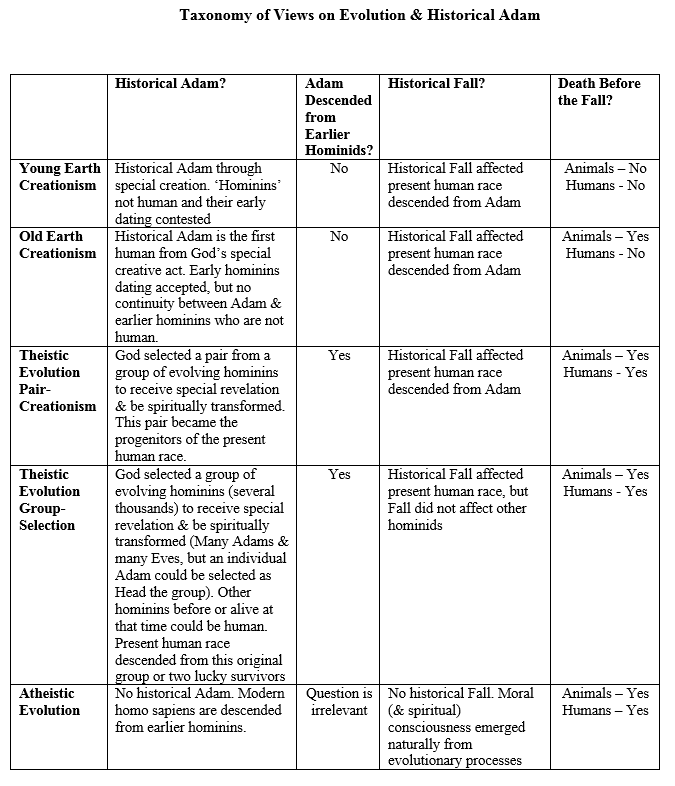
The big question remains: Who was Adam?
If you are interested to listen to an informed discussion, come to the Kairos Forum on Genesis, Adam & Evolution:
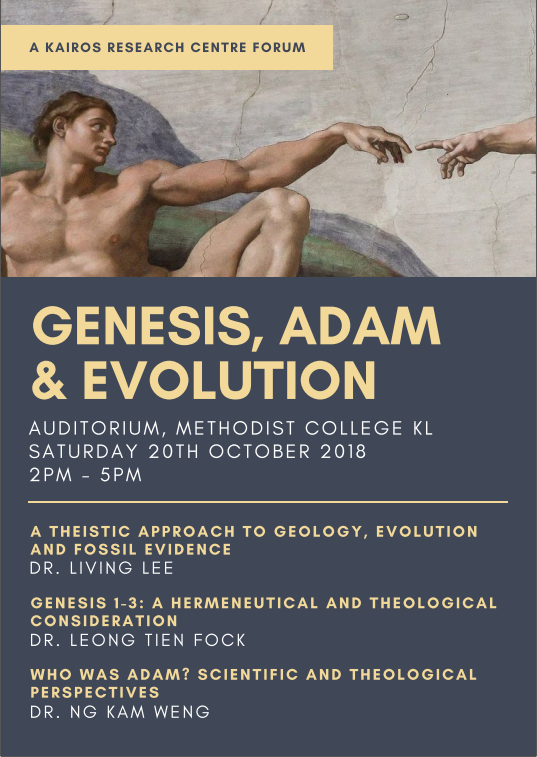 The Forum is admission free.
The Forum is admission free.
Footnote:
* Sometimes the terms are subsumed under a more generic term, hominoids to refer to all human-like animals, including humans, apes and their ancestors. The taxonomy may be grouped accordingly:
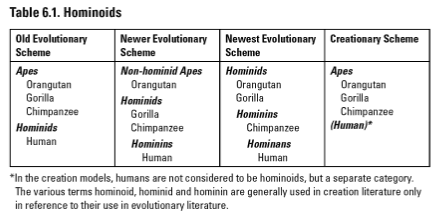
See, Gerald Rau, Mapping the Origins Debate (IVP, 2012), pp. 130-132.
Looks like we will have to endure the confusion until the paleoanthropologsts come to some agreement about the usage of the terms.
What are some books/materials you would recommend beginners to start with?
Hi SN, Just some basic books:
1) Ernst Mayr, What Evolution Is (Phoenix, 2001). To get the basic concepts of evolution.
2) Ann Gauger, Douglas Axe & Casey Luskin, Science & Human Origins (Discovery Inst. 2013). A critical but competent Christian engagement with the current state of paleoanthropology & new developments in population genetics.
3) Fazale Rana & Hugh Ross, Who Was Adam 2e (Reason to Believe, 2015). Stimulation discussion on the subject by two senior research scientists.
4) Kenneth Keathley, J,B. Stump & Joe Aguirre, Old Earth or Evolutionary Creation (IVP, 2017). Serious but respectful, concise but meaty debates on Origins between Reasons to Believe and Biologos (two highly authoritative & influential Christian organizations working on origins).